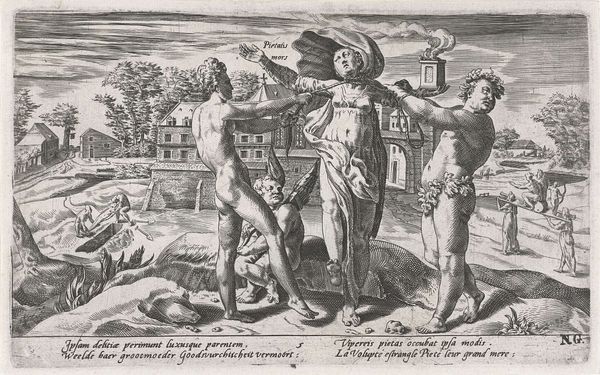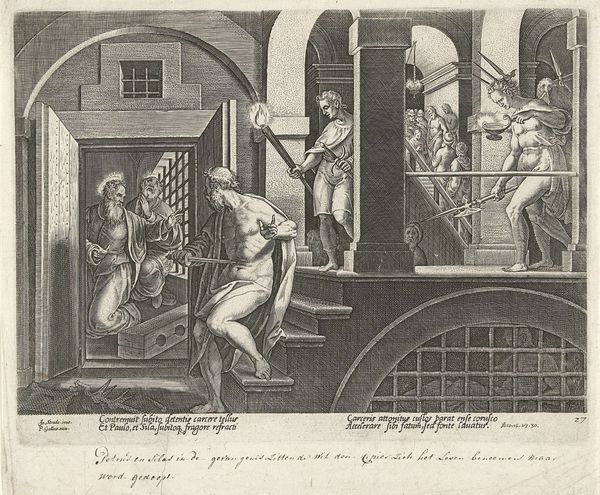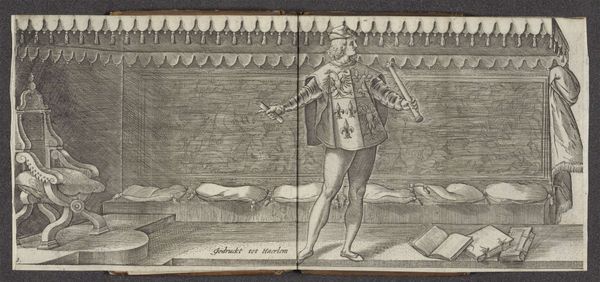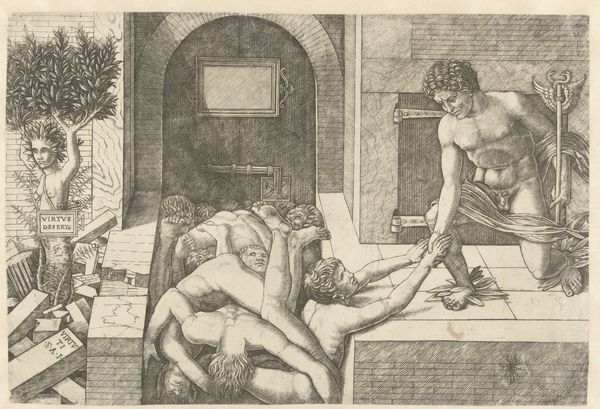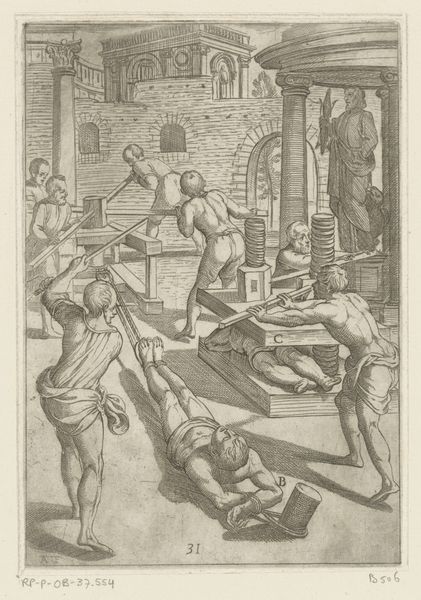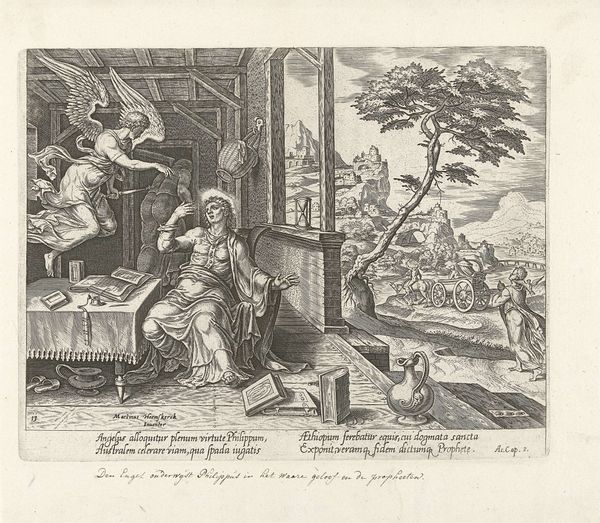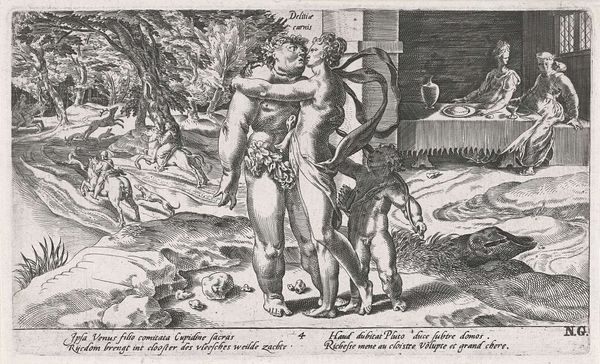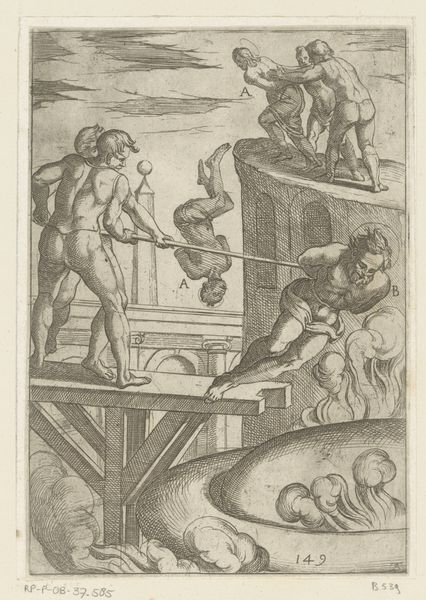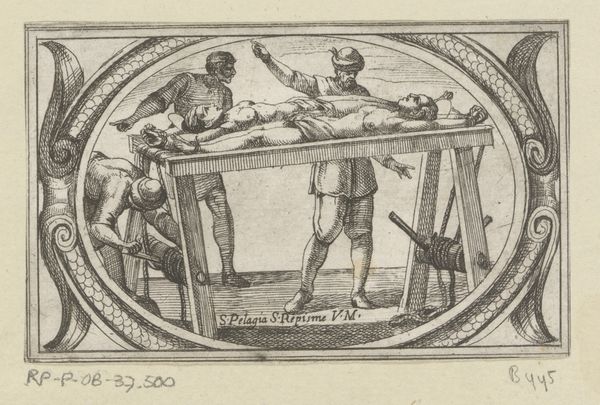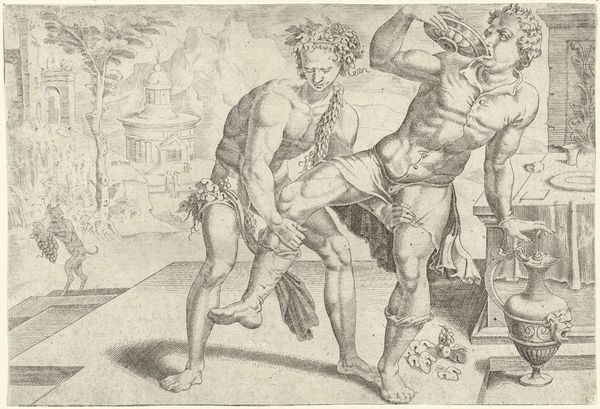
Seditio (Rebellion), or the Separation of the Netherlands 1604
0:00
0:00
dirckvolckertszcoornhert
Rijksmuseum
print, engraving
#
allegory
# print
#
figuration
#
11_renaissance
#
history-painting
#
nude
#
engraving
Dimensions: width 206 mm, height 121 mm
Copyright: Rijks Museum: Open Domain
Curator: The rawness of this strikes me. It’s brutal, unflinching. I'm referring to Dirck Volckertsz Coornhert’s 1604 engraving, "Seditio (Rebellion), or the Separation of the Netherlands", currently housed at the Rijksmuseum. What grabs you first about it? Editor: The central figures – their bodies are so stark. Raw power and vulnerability at once. They disrupt this space with its controlled architectural forms. What's the context of representing conflict through nudes like this? Curator: The allegorical nudes are wielding fire and weapons—classic symbols of destruction and war. Notice how they attack a monastic space on one side, driving out figures labeled, in the lower margin, as "monks and papists," while others till the earth. It’s a commentary on the political turmoil within the Netherlands at that time. Coornhert was deeply invested in religious and political freedoms, right? Editor: Precisely. This print serves as visual propaganda. The Dutch revolt against Spanish rule was intertwined with religious upheaval—the Reformation—with the iconoclasm against Catholic Churches and Spanish officials representing Catholic orthodoxy. We can read this piece as reflecting Coornhert's view on the destructive, transitional nature of rebellion. Curator: Yes, there’s a narrative being spun here, through symbols rooted in the collective psyche. Fire, as purification, destruction, renewal. What about the visual style itself? It seems to borrow from both classical and contemporary trends. Editor: It certainly does. Note the echoes of Mannerist figuration— elongated limbs and dramatic poses create tension. Coornhert presents the actors as though compelled by an intrinsic cultural mandate and necessity. This composition creates an uneasy, almost unsettling effect which adds to the impact this print likely had during a period of such fraught socio-political transitions. Curator: And it's remarkable how a single image like this carries such weight— condensing complex historical struggles into readily accessible symbols. It's not merely historical record, but an active player within cultural memory. Editor: I agree. And to be confronted with such graphic visual metaphors certainly clarifies how art became such a vital public mouthpiece then, as it continues to do now.
Comments
rijksmuseum about 2 years ago
⋮
Two bodies joined at the hip fight one another. Against the background of religious violence they seem to have forgotten that they form a single entity and so destroy each other. Here they symbolize the Netherlands and the civil war that has erupted. Without mutual reconciliation and some form of tolerance the two combating Netherlandish parties will suffer a senseless defeat.
Join the conversation
Join millions of artists and users on Artera today and experience the ultimate creative platform.


